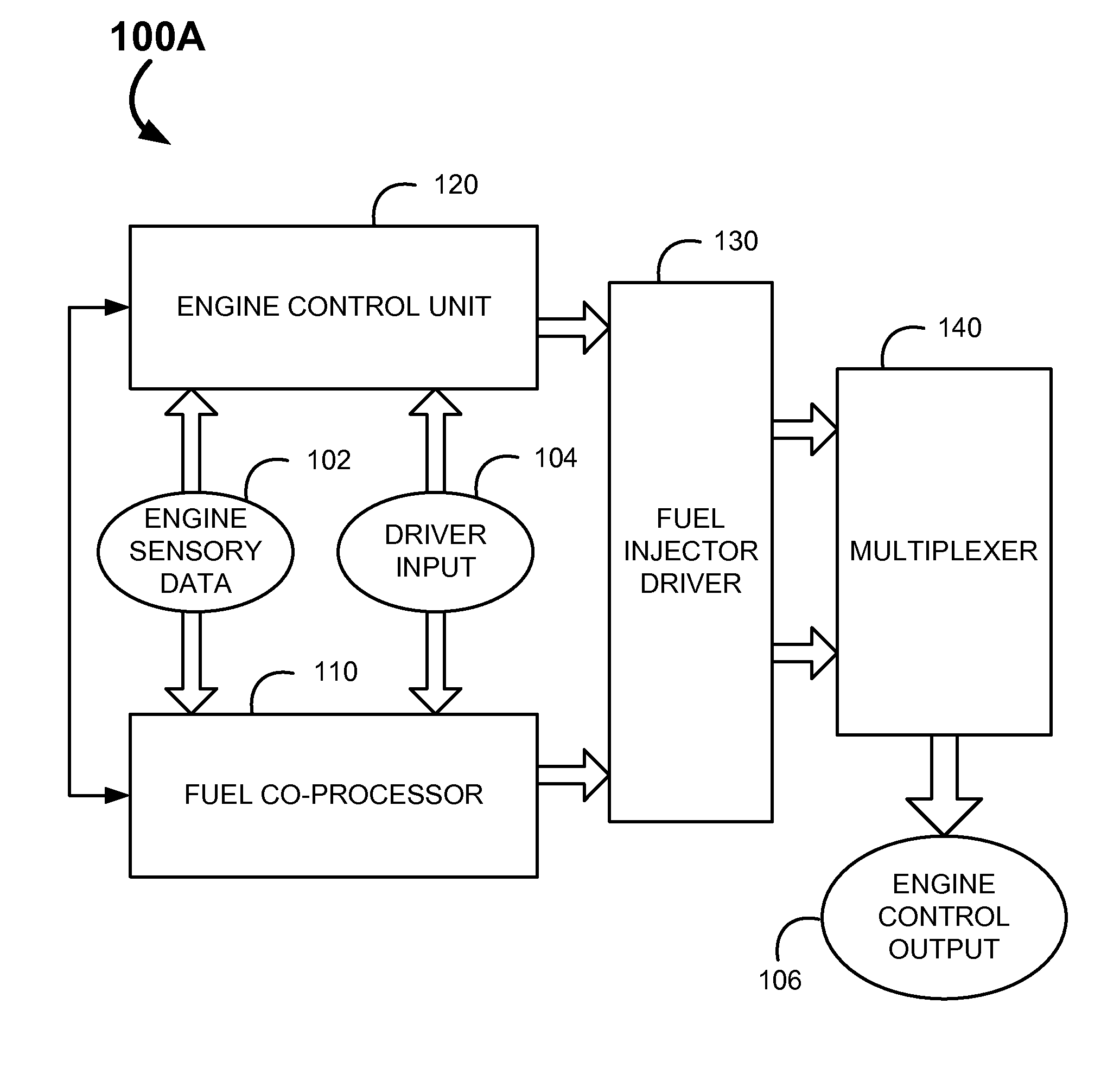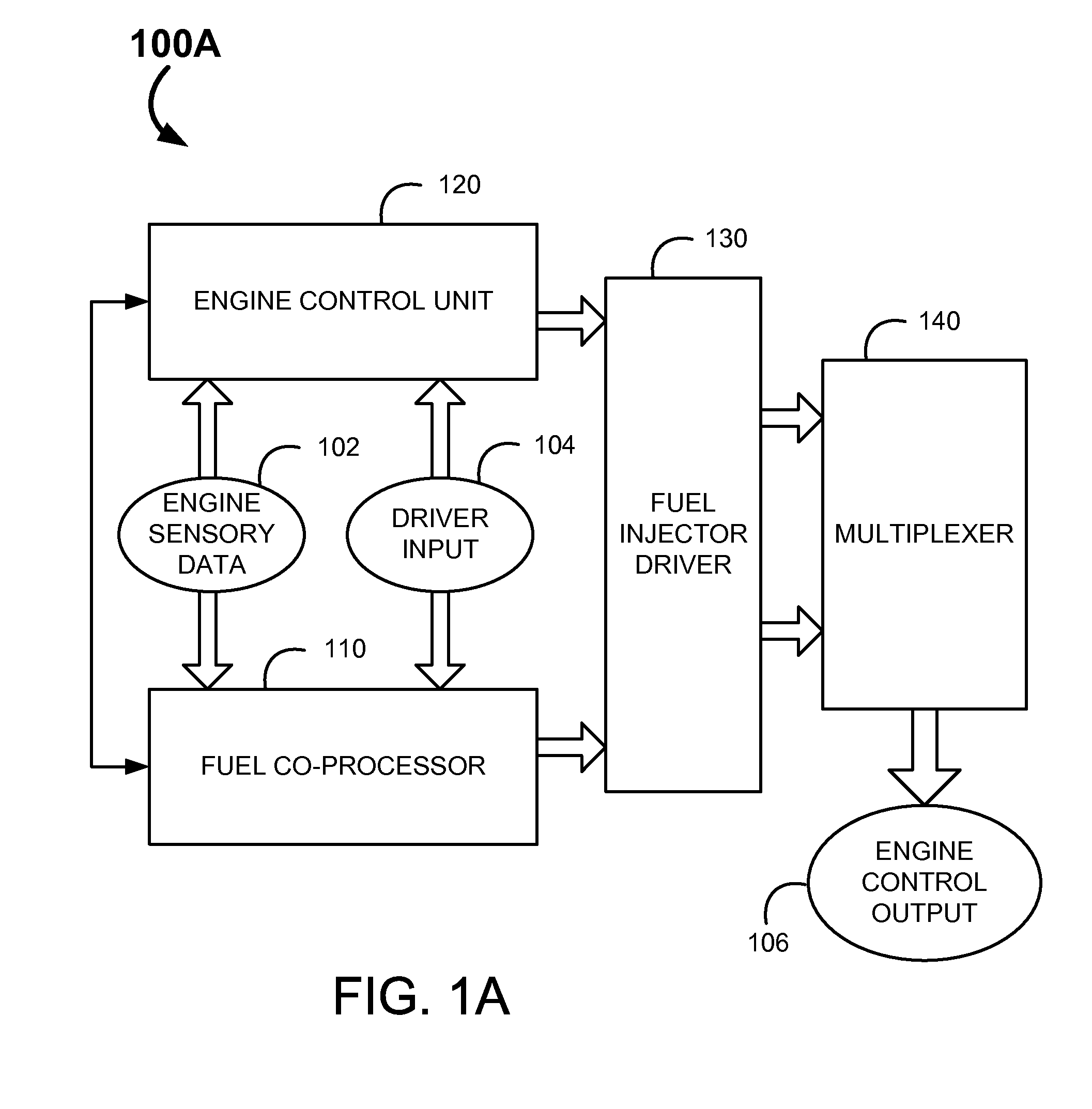System and Methods for Improving Efficiency in Internal Combustion Engines
a technology of internal combustion engine and control system, which is applied in the direction of electrical control, process and machine control, instruments, etc., can solve the problems of increasing the cost of operation, reducing the efficiency of current internal combustion engine, and releasing large amounts of undesirable emissions, so as to improve the efficiency of internal combustion engine and maximize the percentage of time
- Summary
- Abstract
- Description
- Claims
- Application Information
AI Technical Summary
Benefits of technology
Problems solved by technology
Method used
Image
Examples
example two
III. Example Two
Six Chamber Dual Exhaust Engines
[0237]FIGS. 14A to 18E are functional permutations of an example V6 style internal combustion engine in conventional operation. This style engine is functionally similar to the Honda™ V6 J-series engine. Of course, many V6 style engines are functionally similar to the exemplary diagram.
[0238]The six cylinder Honda™ engine is capable of shutting down 2 or 3 cylinders. The system uses the i-VTEC system to turn off one bank of cylinders under light loads, turning the V6 into a straight-3. The latest Variable Cylinder Management system is able to turn off one bank of cylinders or one cylinder on opposing banks, allowing for three-cylinder use under light loads and four-cylinder use under medium loads.
[0239]The Honda J series engine deactivates specific cylinders by using the VTEC (Variable Valve-Timing and Lift Electronic Control) system to close the intake and exhaust valves while simultaneously the Powertrain Control Module cuts fuel to ...
example three
IV. Example Three
Five Chamber Engines
[0327]In addition to the present invention being of use with V type engines, there is considerable opportunity for a variable displacement system, as discussed in this application, to be utilized in conjunction with standard in line style engines. For the following examples, a 5-cylinder inline engine will be discussed.
[0328]The 5-cylinder engine's advantage over a comparable 4-cylinder engine is best understood by considering power strokes and their frequency. A 4-cycle engine fires all its cylinders every 720 degrees, the crankshaft makes two complete rotations. If an even firing engine is assumed, 720 degrees may be divided by the number of cylinders to determine how often a power stroke occurs. In regards to a four cylinder engine: 720 degrees÷4=180 degrees, so a 4-cylinder engine gets a power stroke every 180 degrees. Thus, a V8 engine gets a power stroke every 90 degrees, (720°÷8=90°).
[0329]A given power stroke may last no more than 180 deg...
PUM
 Login to View More
Login to View More Abstract
Description
Claims
Application Information
 Login to View More
Login to View More - R&D
- Intellectual Property
- Life Sciences
- Materials
- Tech Scout
- Unparalleled Data Quality
- Higher Quality Content
- 60% Fewer Hallucinations
Browse by: Latest US Patents, China's latest patents, Technical Efficacy Thesaurus, Application Domain, Technology Topic, Popular Technical Reports.
© 2025 PatSnap. All rights reserved.Legal|Privacy policy|Modern Slavery Act Transparency Statement|Sitemap|About US| Contact US: help@patsnap.com



